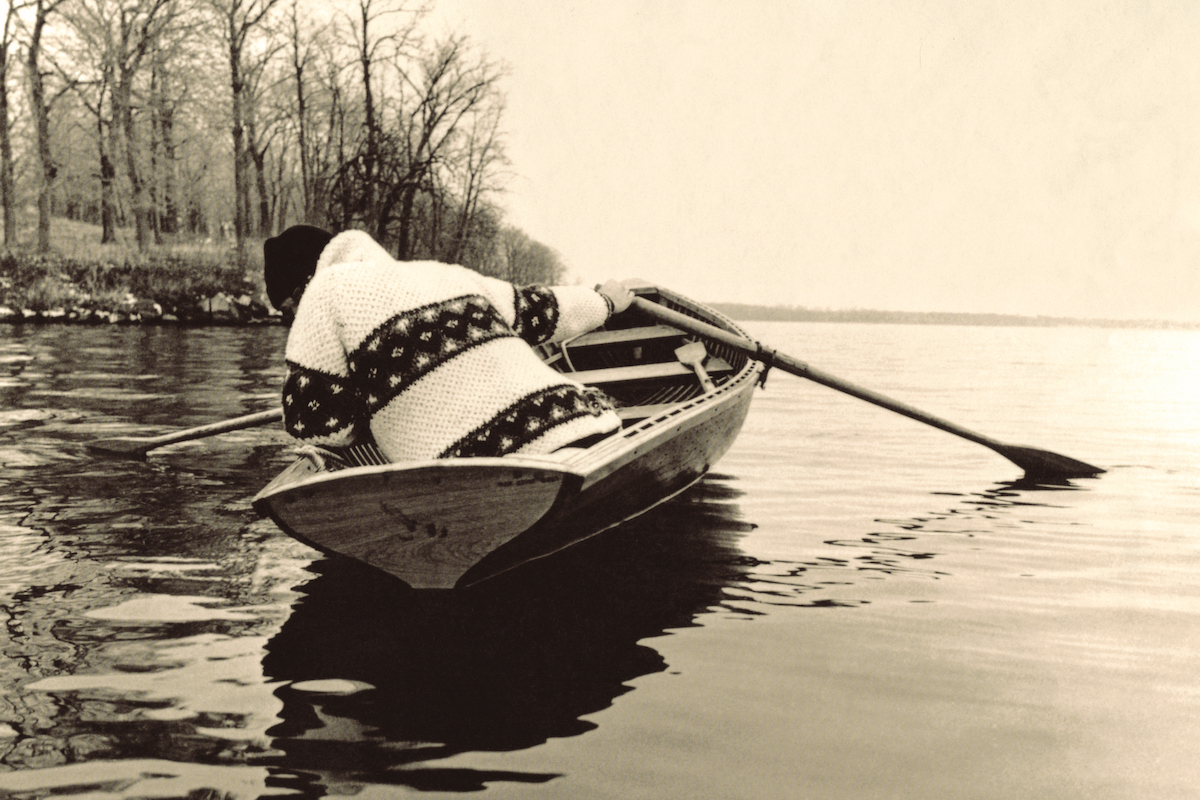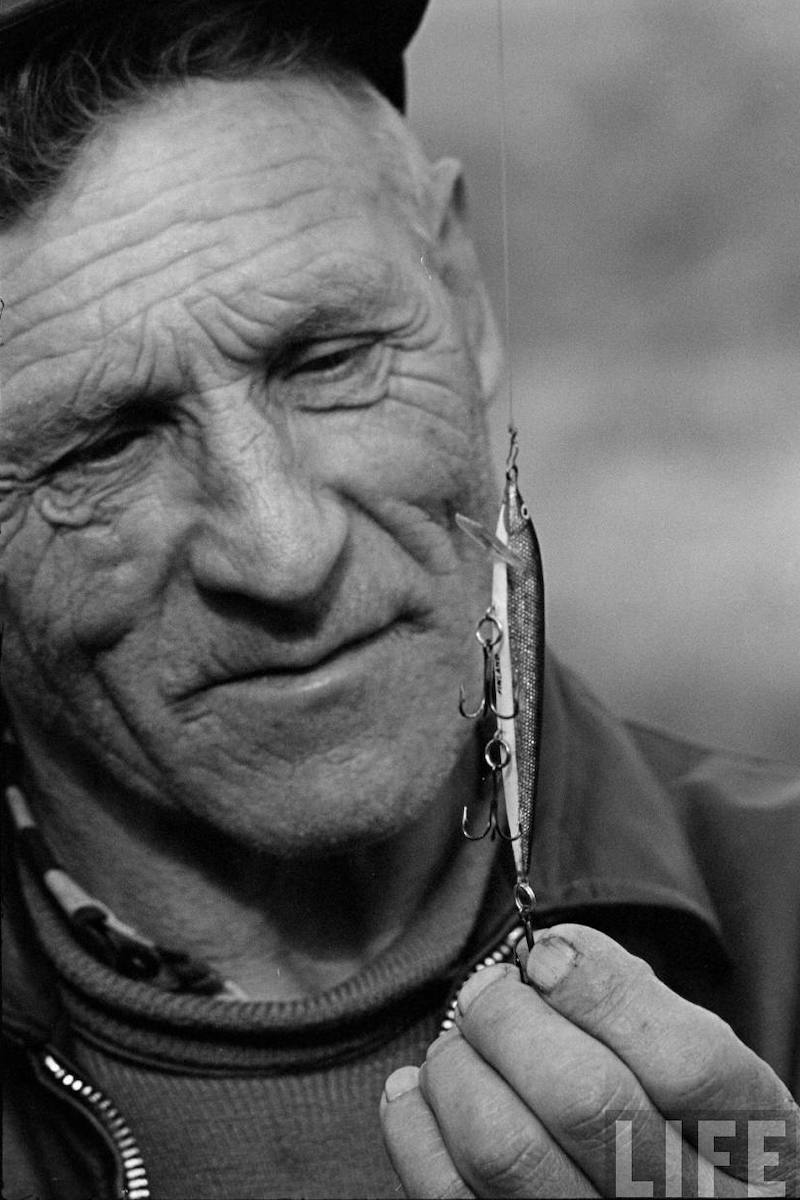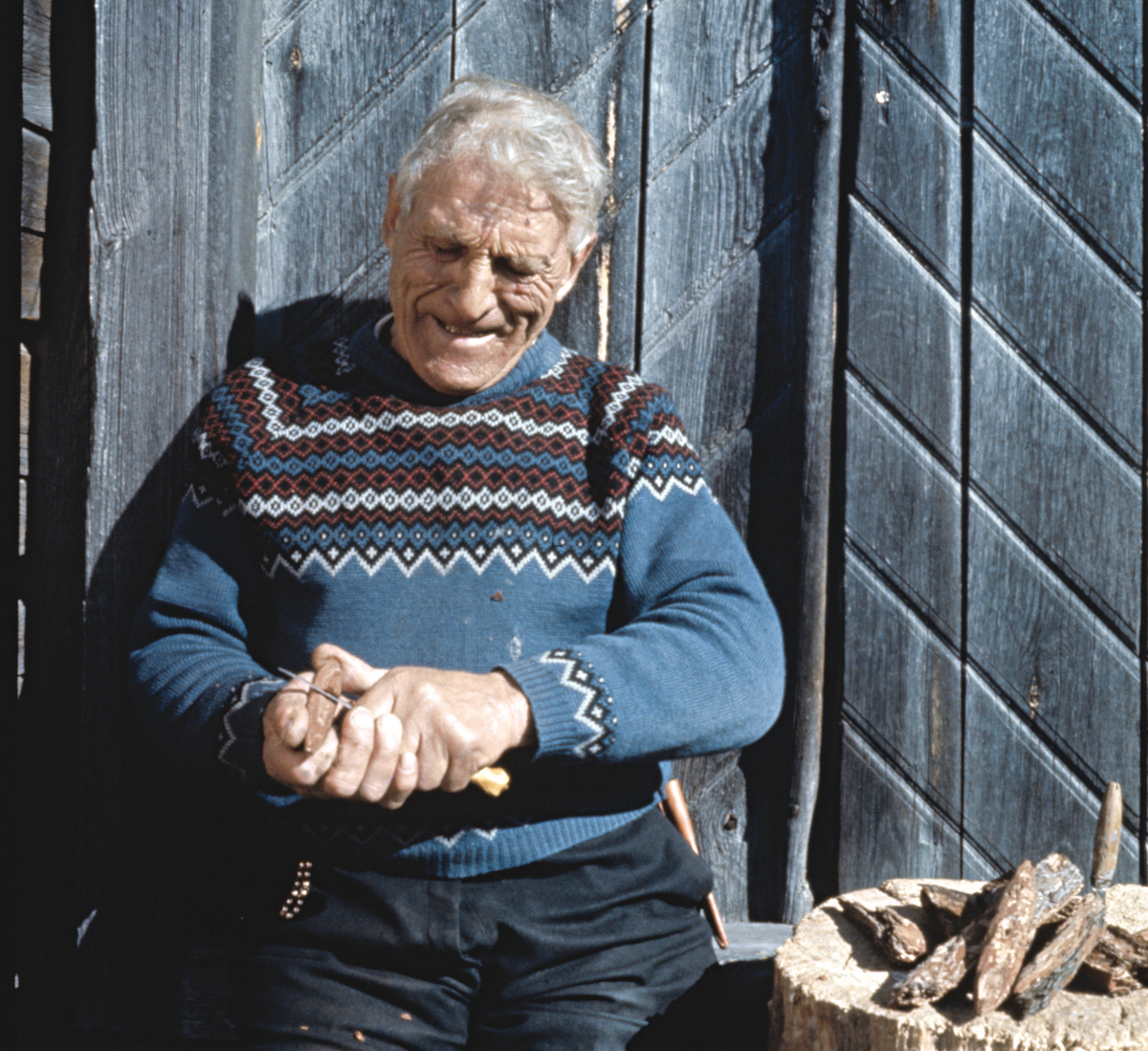
I still have my first Rapala. It’s sitting on a bookshelf alongside a rusted fly reel, a sun-bleached set of whitetail antlers, and other treasured items from my youth. I removed it from its hallowed space in the tacklebox to put it there a few years ago to enjoy a quiet and well-earned retirement. My uncle Peter gave me the Original Floating Minnow when I was 10 years old, tossing it into my lap one summer morning and telling me it was the only lure I would ever need. As I look at it now, with its shiny gold paint almost completely worn away and balsawood body deeply gouged and scraped with battle scars left by the grasping the teeth of hundreds of fish, I realize he was right.
For two decades I took that Rapala with me everywhere and fished with it for nearly everything. I caught crappies and largemouth in my uncle’s farm pond, trolled for walleye and pike, flipped it under docks for summer smallmouth, and even cast it for trout, salmon, and steelhead in the tributaries of the Great Lakes. It was my go-to lure, my workhorse, the first bait I learned to fish well. Even though I had other Rapalas, that first one was truly special. The Original Floating Rapala changed the game for me, helping me evolve from an adolescent plunker of worms into an actual angler, just as it has for thousands of others in the century since its creation.
The Creation of a Lure
It’s difficult to think of a great lure coming from more humble beginnings. The story begins in central Finland in 1912 when a young serving maid named Mari and her 7-year-old son Lauri moved from their home village to Asikkala, a small town in the south of the country. Upon arriving, the clergyman who wrote the extract for the town register about the mother and child’s arrival forgot their surname, Saarinen, and instead wrote the name of the village from which Mari and Lauri had come—Rapala, a name that would soon become among the most well-known Finnish word in the world.
Growing up in Asikkala was hard for Lauri. There was no school and few other options for a child other than to go to work as soon as they were physically able, which Lauri did, quickly finding that he could turn his hand to almost anything. He grew up to be strong and capable and, in 1928, Lauri met and married a woman named Elma Leppanen. The young couple then moved to the village of Rihilahti where Lauri found work as a lumberjack in the winter and as a fisherman in the summer—a job that would lead him to his destiny.
Lauri would fish by trolling long handlines behind his boat to catch pike, perch, and trout to sell at the village market. He baited the lines with minnows caught from a nearby forest lake every day by Elma. She carried buckets of the tiny baitfish to Lauri, who was constantly fishing or cleaning fish for the market and didn’t have time to gather the bait himself. Elma typically made three trips for Lauri, walking an average of 20 miles a day, while still managing to take care of the couple’s four growing boys. It was a routine that simply couldn’t be maintained. Soon enough, Lauri set out to find a lure that would catch as many fish as a real minnow.
Lauri first fished with wooden lures he obtained from America but never found one that could produce like the real thing. So, he began spending long hours observing schools of baitfish from his boat, watching how they moved and acted. Lauri noticed that trout, the most valuable gamefish in the Finnish waters he fished, would single out and strike the wounded and sick minnows in the baitfish schools first. He believed that the wounded minnows’ erratic, wobbling swimming action made them targets, so he decided to try creating a lure that imitated them.
For several years, Lauri experimented. One day in 1936, armed with a shoemaker’s knife and a file, he shaped his first successful floating lure from a piece of cork. He used tinfoil from a neighbor’s cheese and chocolate packets to create a reflective surface on the lure, then melted photo film negatives across its length to give it a protective coating. The lure was black on top, gold along its sides, and white on the bottom—just like the minnows he used for bait.
After completing that first lure, Lauri made several more and began trolling them on his hand lines. They worked so well that according to his sons, Lauri could catch more than 600 pounds of trout, salmon, pike, and perch in a single day. In the late 1930s, when war began to break out across Europe and supplies of cork were hard to come by. Lauri started to make his lures out of pine bark and balsawood, keeping his family fed and his fish on the market until the war came too close to home and Lauri left his fishing business and family to defend his homeland.

The Creation of a Legend
After serving six years in the Finnish Army and fighting off the Soviets, Lauri returned home to find that his lures were in demand. He had frequently used the lures while in the army to catch fish for himself and his friends and unintentionally promoted them among his fellow soldiers. In one such instance, Lauri boasted that he could catch more fish using his lures than his friends could using dynamite. They even put it to the test. After a few hours of fishing, Lauri caught 78 pike, far exceeding the number his friends caught with explosives. Word spread and as soon as the war ended, dozens of anglers came to Lauri hoping to buy one of his lures.
Realizing the potential, Lauri began to demonstrate his gear at agricultural and industrial shows. Shortly thereafter, he had to give up fishing and dedicate all his time to whittling and selling his lures. Eventually, Lauri’s sons and neighbors joined him in carving the lures by hand. As demand grew, Lauri and his family developed special band and circular saws that could create identical lure blanks. However, Lauri still insisted on hand testing each lure for that “wounded fish action” before letting it go to market.
After World War II, Lauri’s “Rapala” gradually made its way across the Atlantic to America. A friend of the family, Vihtori Tommala, who had moved to the United States but frequently vacationed in Finland after the war, brought the lures back to the U.S. to fish with and to give away to Finnish friends living in the country. Later, during Finland’s 1952 Olympics, American athletes purchased the lures and brought them back to their fishing friends and loved ones. Word of the baits’ prowess continued to spread until in 1959, Finnish Consul Aleks Kyyhkynen began to sell the lures in his store in Duluth, Minnesota, where Rob Weber, a fishing tackle sales representative, purchased them. Weber loved the lures so much that he ordered 500 of them, established a relationship with Lauri, and later partnered with Ray Ostrom to market the lure. Together the two men formed the Normark Corporation to distribute Rapala lures in North America, ultimately merging with the Rapala company to become the Rapala-VMC tackle giant we know today.
In 1962, Life Magazine published a two-page article about the Rapala lure titled “The Lure Fish Can’t Pass Up.” Soon, “Rapala Fever” was running rampant throughout the United States with anglers buying as many of the lures as they could, often hoarding them like gold. Shortly after, Lauri found himself a hero in his native Finland, overcoming nearly a half-century of struggle and poverty to become a household name. He created something special that day with his shoemaker’s knife and a piece of cork. A lure that would stand the test of time, the Original Floating Rapala remains the company’s best-selling lure and continues to work its magic for modern anglers today.

The Creation of a Legacy
Perhaps the lure’s humble beginnings are the biggest reason that the original Rapala became so successful. Unlike many modern lures, which burst onto the market and flash in the faces of anglers through infomercials and fishing shows that insist you buy without knowing whether the lure is any good or not, the reputation of the Rapala was spread through word of mouth. It didn’t need some flashy, full-color advertisement. Rather it wove its way through the shadows of angling lore on its own merit, creating a secret and unspoken culture of success and demand that altered the face of fishing to what it is today.
“I think the original Floater changed it all because it created a whole new generation of artificial anglers,” said professional fisherman, television personality, and bass fishing legend Mike Iaconelli. “Back when my grandfather was younger, everyone fished with bait because Rapalas were really hard to get. They were almost this mystical thing that he just had to have. When he finally did get one, it became like a sacred lure for him. They changed the fishing game for him because they worked so well and really were as good as advertised. Eventually, the Rapala did the same for me. To see that passed on through the generations, it’s truly amazing.”
Iaconelli credits the lure with making him into the angler that he is today.
“The Original Floating Rapala minnow, in particular the 9S with the silver and black back, is the lure that got me hooked on bass fishing,” he said. “Basically, when I was 9 or 10 years old, I stole that lure out of my grandfather’s box on a family vacation to the Poconos. I loved Pop but he was very particular about those lures and wasn’t one to loan them out, so I had to be sneaky. Anyway, I took it and casted it off the dock and BANG! I caught my first very nice bass. All these years later I’m still fishing the bait and I still feel it has a place in my box. That floating Rapala minnow, particularly the #9 and the #11 just do what I need them to do, especially in the spring and early summer, which is to me when that bait truly shines. I’ve used it in Florida in February and in Canada in June and everywhere in between. It’s just a phenomenal lure.”
Other anglers share Iaconelli’s opinion about the Original Floating Rapala, including professional bass angler and MeatEater contributor, Pete Robbins.
“I have fond memories of the Original Rapala,” Robbins said. “It was one of my staples in my earliest pond fishing days, and to a 10-year-old budding angler opening the hard plastic box to free the lure was a magical moment. I suppose that the fact that they were Finnish added some mystique. I started with the #5 and #7, eventually graduated to the #9 jointed model, and while silver with a black back was probably most productive, I felt that I'd hit gold when I added rainbow trout and yellow perch patterns.”
It's not just bass anglers who have great success and love using the Rapala. According to Eric Strader, general manager, and professional trout guide for Greater Yellowstone Outfitters in Livingston, Montana, the Original Rapala is one of his favorite baits for chasing trophy trout in the rivers of Southwestern Montana, especially when the fishing is tough.
“I fished with Rapalas growing up and caught a ton of fish on them,” Strader told MeatEater. “And though I prefer to fly fish nowadays, whenever I have a client who wants to use spinning gear or is having a lot of trouble finding a big trout on a streamer, the Rapala is my go-to. It just swims and fishes so well, it almost calls trout in to smash it. On cold days when big browns are being super sluggish or on warm days when nothing else seems to be working, the Rapala will still put trout in the net, day in, day out. It’s the lure I always carry with me and fish when my clients just need to feel a bend in the rod. There’s just nothing else like it out there.”
Ultimately, that’s the Original Rapala’s true legacy. For 20 years, I dove off boats, climbed trees, and waded through raging rivers to free my first Rapala from snags. I replaced its hooks when they got dull, gave it its own slot in my otherwise jumbled tackle box, and took special care to never lose it, all to ensure that one day the lure would end up on a shelf. Fishing that first Rapala was magic, and whenever I look at it now, I always remember that feeling. No matter how many others attempt to imitate the design or try to create a better lure—like the Highlander, Elvis, and Lauri Rapala himself, in the end there can only be one.






